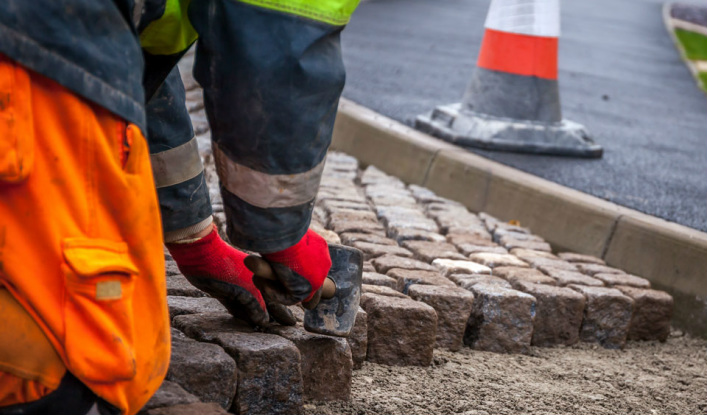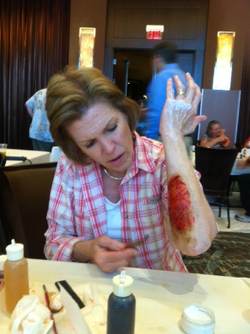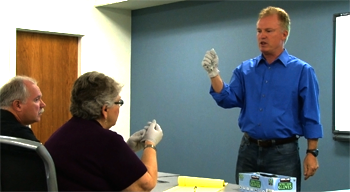Author:
|
Back to Blog
CPR stands for cardiopulmonary resuscitation. It is a lifesaving procedure that is done when someone's breathing or heartbeat has stopped. This may happen after choking, suffocation, drowning, or other injuries. CPR involves:
CPR can save life, but it is best done by someone has undergone CPR course or training. The procedures outlined here are not a substitute for CPR training. Parents and those who take care of children must know infant and child CPR if they haven't already. The newest techniques emphasize compression over rescue breathing and airway, reversing long-standing practice. Causes There are many factors that make the breathing and heartbeat of infant to stop. Other reasons you may need to do CPR on an infant are the following:
Cardiopulmonary Resuscitation should be done if the infant has the following symptoms:
The following CPR steps are based on instructions from the American Heart Association.
Prevention Most children need CPR because of a preventable accident. The following tips may help prevent some accidents in children:
0 Comments
Read More
Back to Blog
Good Samaritan "CPR"4/12/2015 Do your poor choices in the past disqualify you from making good choices in the future?…Does what you did yesterday define who are today or who you will be tomorrow? Sergio Leyva, an inmate in the LA county jail, learned he could redeem himself though something as simple as CPR.
Back in August of this year, one of his correctional officers collapsed while suffering from a heart attack. Sergio and several other inmates rushed to help their fallen jailer. “No breathing. No heartbeat,” Sergio said. “I did CPR on him. And, basically brought him back to life.” “I didn’t see him as an officer. He’s a person. I was going to help that person, regardless of the uniform or no uniform,” he explained. “That man is someone’s father and I have a father. I would like someone to be able to help my father if that happened to him.” “I’m really not a bad person.” he continued. “I’m actually a good person, I just made bad choices. That’s all. I know that if it were me laying on the ground, dying, that man would have helped me.” And thanks to Sergio, his correctional officer is alive today because of his quick thinking and determination to show compassion in the most unlikely setting. To take a CPR or first aid class give us a call at 503-538-2610 or www.cprnorthwest.com
Back to Blog
Hand Injuries in Construction3/29/2015  Hand Injuries in Construction A construction worksite can be a real epicenter for hand injuries. A 2011 article in EHS Today cites some scary statistics about the frequency and the expense of such incidents: From the CDC -- Hand injuries send more than 1 million workers to the emergency room annually in the United States. From the U.S. Bureau of Labor Statistics -- When cuts and lacerations of the fingers and hands are combined, the number of days-away-from work cases (approximately 110,000 annually), are second only to back strains and sprains, From the National Safety Council -- The average direct cost of a laceration = $10,000; Stitches = $2,000 plus indirect costs, such as time away from work; Severed tendon = $70,000. Lost time, costly expenses, and workers who can no longer do their job tasks — there are many reasons hand injuries are a real issue for the construction industry. Step one to preventing these sorts of incidents begins with the right gloves for the job. For a 60% improvement in the relative risk for hand injury, be sure your workers have the correct gloves, that those gloves fit properly, and that they are actually worn. No slipping off the gloves “for just a moment so I can more easily finish this task.” Glove manufacturers use high-tech fibers and materials to make the outstanding PPE gloves available on the market today. They are created with a focus on touch sensitivity and dexterity, which are key to a worker’s successful experience wearing gloves on the job. Gone are the days of clumsy, ill-fitting gloves that hinder tasks, so gloves should always been worn as appropriate for the task. Good safety training drives the point home about the seriousness of hand injuries, and emphasizes the importance of engineered safety devices like machine guards (and why we should never disable or bypass them), as well as the best practices to follow to help avoid injury. Summit’s Hand Safety course includes information relevant for multiple facilities, including laboratories and manufacturing sites such as steel mills and automotive parts makers. Hand Safety covers:
To take a class or more information call (503)538-2610 or www.cprnorthwest.com
Back to Blog
New OSHA Reporting Requirements3/22/2015  Are You Prepared for New OSHA Reporting Requirements? This may be a recap for you, but we wanted to reiterate the importance of the Occupational Safety and Health Administration’s (OSHA) new reporting requirements that went into effect January 1, 2015. Previously, all employers under the federal jurisdiction of OSHA were required to report all workplace fatalities and when three or more workers were hospitalized in the same incident, but the same employers are now required to report on an expanded list of severe injuries:
It’s important to remember that these updated reporting requirements are not simply paperwork but have a life-saving purpose: they will help employers and workers prevent future injuries by identifying and eliminating the most serious workplace hazards. Ensure Your Site is OSHA-Compliant with Pre-Audit Inspections According to the OSHA Budget Justification, as a result of increased identified health issues, the organization plans to increase the number of health inspections occurring in the 2015 fiscal year. Are you prepared? To take a BBP class or find out more call us at 503-538-2610
Back to Blog
First Aid Statistics – 7 Facts3/9/2015  Safe practices at work, home, and play can prevent many injuries, illnesses, and deaths. Once injury or sudden illness has occurred, effective first aid can be the difference between a rapid or prolonged recovery, a temporary or permanent disability, and even life or death. If that isn't motivation enough to make sure that you and your employees are first aid and CPR/AED trained, wait until you read the statistics. The Occupational Safety and Health Administration, OSHA, defines first aid as “emergency care provided for injury or sudden illness before professional emergency medical treatment becomes available.” The statistics for workplace and home injuries and deaths are alarming.* An incident can happen anywhere and to anyone iSafe practices at work, home, and play can prevent many injuries, illnesses, and deaths. Once injury or sudden illness has occurred, effective first aid can be the difference between a rapid or prolonged recovery, a temporary or permanent disability, and even life or death. If that isn't motivation enough to make sure that you and your employees are first aid and CPR/AED trained, wait until you read the statistics. The Occupational Safety and Health Administration, OSHA, defines first aid as “emergency care provided for injury or sudden illness before professional emergency medical treatment becomes available.” The statistics for workplace and home injuries and deaths are alarming.* An incident can happen anywhere and to anyone. Statistics:
Get trained and be prepared for an emergency. *The statistics cited in this article come from OSHA, NIOSH, and the Home Safety Council: Takala, J. “Introductory Report: Decent Work — Safe Work.” International Labour Organization, 2005. http://www.ilo.org/public/libdoc/ilo/2005/105B09_281_engl.pdf Centers for Disease Control and Prevention. “Traumatic Occupational Injuries.” The National Institute for Occupational Safety and Health (NIOSH). http://www.cdc.gov/niosh/injury/ Authorized ASHI and MEDIC First Aid Instructors are ready to help you. You can find a class in your local area by searching our Training Center Directory. For more information or to take a class call 503-538-2610 or www.cprnorthwest.com
Back to Blog
Bloodborne Pathogens (BBP) Training3/2/2015  Teaching bloodborne pathogens (BBP) is a crucial part of any emergency care class. BBP is serious stuff, and people really should be a little apprehensive when it comes to potential contact with bloodborne diseases. Once you understand how easy exposure is, or how infected, dried blood remains infectious even after 7 or more days, you are a lot more motivated to protect yourself when assisting others. That knowledge even makes you a better healthcare consumer, because now you’re watching your providers and making sure they are keeping you safe by following best practices. BBP knowledge is a win-win, and it’s so easy to incorporate into your classes. You start with your customers. Ask them about their BBP training requirements, about their company's Written Exposure Control Plan. Chances are, they’ll say they don’t have one or didn’t know they needed one. But they do need it. BBP training falls under OSHA’s general duty clause, if not specifically referenced (as in the Construction Standard), and that makes it required to be communicated to designated responders and exposed employees. Written Exposure Control Plan templates with “fill-in-the-blanks” can be purchased and the www.osha.gov website has more information on the subject. Now that you have customer buy-in and an exposure plan to work with, what you can do in the classroom itself to get your message about BBP across to your students? Mix it in. ASHI makes it easy to weave BBP into any emergency care training class. If you’re teaching Basic First Aid, just stop the video at the segment on personal safety, and if not conducting a full certification class, spend a little extra time going over BBP in greater detail. Make it part of what you do in every class, since it touches on so many other topics. You can also weave all the components of the 29CFR 1910.1030 requirements throughout the entire CPR/AED/First Aid training, as long as all required topics are covered, company-specific information is supplied, and proper donning/doffing of PPE is practiced. (You've gotta love ASHI for this flexibility!) Make it real. Often customers will let you move your group onto the actual factory floor or shop for a portion of your class time. Being in the actual workplace scene makes it real and immediate for your students. I bring an orange safety cone with a sign explaining that we’re doing a rescue scenario and that this is NOT real blood. I learned that one the hard way, when a nearby worker who was just observing saw the scenario in progress, fainted, and hit his head, giving the company its first recordable accident in over a year. Get permission to be on the floor and announce what you are doing! Be sure you weigh the value of "creative training vs potential problems" when designing your course. Make it fun. As an ice-breaker, I divide my class into three groups. Each group must come up with as many "blood-related" words (bleeding, bloody, etc.) as they can in a couple of minutes. We compare lists, crossing off every word that’s suggested by more than one group. The last group with the most unique words wins some candies or whatever I’ve brought with me. It gets them focused on the topic, gets them engaged in adult learning, and helps everyone lighten up before class starts. Do you have any BBP tips and tricks you would like to share? Please leave a comment below! OSHA requires that BBP class have to be taken once a year if you haven't had your BBP class in a few years you could be open for fines. Your CPR class every 2 years doses not meet this training need. www.cprnorthwest.com or 503-538-2610
Back to Blog
February 19th, 20152/19/2015  History of CPR CPR Myths and Popular Culture The CPR resuscitation technique that many of us older readers may first remember was described in the first edition of the Boy Scout Handbook in the United States in 1911, as a form of artificial respiration where the person was laid on their front, with their head to the side, and a process of lifting their arms and pressing on their back was utilized, essentially the Silvester Method with the patient flipped over. This form is seen well into the 1950's (it's used in an episode of Lassie during the Jeff Miller era), and was often used, sometimes for comedic effect, in theatrical cartoons of the time (see Tom and Jerry's "The Cat and the Mermouse"). This method of CPR would continue to be shown, for historical purposes, side-by-side with modern CPR in the Boy Scout Handbook until its ninth edition in 1979. However it wasn't until the middle of the 20th century that the wider medical community started to recognize and promote it as a key part of resuscitation following cardiac arrest. Peter Safar wrote the book ABC of resuscitation in 1957. In the U.S., it was first promoted as CPR for the public to learn in the 1970s. Early overly aggresive marketing efforts oversold the effectiveness of CPR in rescuing heart attack and other victims, and this misperception continues even today. CPR is often severely portrayed in movies and television as being highly effective in resuscitating a person who is not breathing and has no circulation. A 1996 study by the New England Journal of Medicine showed that CPR success rates in television shows was 75%. The real survival rate of an unwitnessed, out-of-hospital sudden cardiac arrest is in a range of 6% to admission and even less to hospital discharge. The current rise in the distribution and use of Automated External Defibrillators (AED's) is improving the survival rate dramatically. 3000 BC Mayan hieroglyphics and Peruvian Incas performed resuscitation by rectal fumigation. One can only surmise that while not very successful this technique certainly kept anyone from faking a heart attack to get off work for the day. 896 BC Biblical Reference to Resuscitation The first description of a successful resuscitation is recounted in the Bible, in the Book of Kings. A child of a Shunemite couple complained of a headache and died. The prophet Elisha prayed and then: "...placed himself over the child. He put his mouth on his mouth, his eyes on his eyes, and his hands on his hands, as he bent over him. And the body of the child became warm. He stepped down, walked once up and down the room, then mounted and bent over him. Thereupon the boy sneezed seven times, and the boy opened his eyes." (2 Kings, iv, 34.) 500-1500 AD Various methods including flagellation, external heating, rolling over a barrel, or strapping across the back of a horse which then ran around a field. The first report of an experimental intubation of the trachea was probably by the great Muslim philosopher and physician Avicenna (Abu Ali Al-Hussein Ibn Abdallah Ibn Sinna) in approximately the year 1000. "When necessary, a cannula of gold, silver or another suitable material is advanced down the throat to support inspiration." Andreas Versalius published "De humani corporis fabrica" which described blowing into a tube to resuscitate an animal. Early Ages- The Heat Method Very early in our history, people realized that the body became cold when lifeless and connected heat with life. In order to prevent death from taking the person, the body was warmed. The use of warm ashes, burning excrement, or hot water placed directly on the body were all employed in an attempt to restore life. Undoubtably this technique had rather limited success over the years. Early Ages - Flagellation Method In the early ages, the would-be rescuers would actually whip the victim in an attempt to stimulate some type of response. 1530 - Bellows Method In the 1500's it was not uncommon to use a bellows from a fireplace to blow hot air and smoke into the victim's mouth, a method that was used for almost 300 years. Unfortunately, not many people carried fireplace bellows with them, but the success of this procedure motivated various manufacturers to design and manufacture Bag-Valve-Mask Resuscitators. However, in those days, the medical authorities were not aware of the anatomy of the respiratory system and did not appreciate the need to extend the victim's neck in order to obtain a clear airway. Phillipus von Hohenheim wrote about using a bellows to resuscitate people 1493-1541 In 1829, Leroy d'Etiolles demonstrated that over distention of the lungs by bellows could kill an animal, so this practice was discontinued. 1711 - Fumigation Method In the 1700's a new method of resuscitation was used. This "new" procedure involved blowing tobacco smoke into the victim's rectum. According to the literature, smoke was first blown into an animal bladder, then into the victim's rectum. It was used successfully by North American Indians and American colonists an introduced in England in 1767. This practice was abandoned in 1811 after research by Benjamin Brodie when he demonstrated that four ounces of tobacco would kill a dog and one ounce would kill a cat. 1740-Mouth to Mouth The Paris Academy of Sciences officially recommended mouth-to-mouth resuscitation for drowning victims. 1770 - Inversion Method Other methods were developed in the 1700's in response to the leading cause of sudden death of that time, drowning. Inversion was originally practiced in Egypt almost 3,500 years before and it again became popular in Europe. This method involved hanging the victim by his feet, with chest pressure to aid in expiration and pressure release to aid inspiration. In response to the increasing numbers of drowning during this time period, societies were formed to organize efforts in resuscitation. England's Royal Humane Society was founded in 1774. Although it was the most famous, it was not the first. It was preceded by the Dutch Society for Recovery of Drowned Persons, established in 1767. The Dutch recommendations included:
Other methods included physical and tactile stimulation in an attempt to "wake up" the victim. Yelling, slapping, even whipping were used to attempt to resuscitate. 1773 - Barrel Method In an effort to force air in and out of the victim's chest cavity, the rescuer would hoist the Victim onto a large wine barrel and alternately roll him back and forth. This action would result in a compression of the victim's chest cavity, forcing air out, and then a release of pressure which would allow the chest to expand resulting in air being drawn in. This technique was in many ways a precursor to modern CPR techniqes as it attempted to force air in and out of the lungs. 1778 Defibrillation First Suggested Goodwin and Kite deduced that asphyxia causes the heart to stop. Kite suggested electric shock treatment (defibrillation). However, airway problems produced by the tongue were not appreciated. 1803 - Russian Method This concept involved reducing the body's metabolism by freezing the body under a layer of snow and ice. Unfortunately, what the medical authorities did not realize at the time, was that the most critical organ which needed to be frozen in order to accomplish a reduction of the body's metabolism was the brain. 1812 - Trotting Horse Method In 1812 Lifeguards were equipped with a horse which was tied to the Lifeguard station. When a victim was rescued and removed from the water, the Lifeguard would hoist the victim onto his horse and run the horse up and down the beach. This resulted in an alternate compression and relaxation of the chest cavity as a result of the bouncing of the body on the horse. This procedure as banned across the United States in 1815 as a result of complaints by "Citizens for Clean Beaches". 1850 Mouth to Mouth Mouth to Mouth replaced chest pressure except for babies resuscitated by midwives. Anesthetics were also introduced in 1850, resulting in an increase in respiratory arrest in people under medical supervision! 1856 - Roll Method As late as 1856, manual ventilation was given low priority, concentration was on maintaining body heat. These were the same recommendations as provided by the Dutch nearly 100 years earlier. A significant change in priorities occurred when Marshall Hall challenged the conventional wisdom of the Society. His contention that time was lost transporting the victim; that the restoration of warmth without some type of ventilation was detrimental; that fresh air was beneficial; and that if left in the supine position, the victim's tongue would fallback and occlude the airway. Because the bellows were no longer an option, Marshall Hall developed a manual method in which the victim was rolled from stomach to side 16 times a minute. In addition, pressure was applied to the victim's back while the victim was prone (expiratory phase). Tidal volumes of 300 ml to 500 ml were achieved and soon became adopted by the Royal Humane Society. 1858 Silvester method introduced A now obsolete method of artificially resuscitating still-born children, and for restoring persons apparently drowned or dead. The patient would be on his or her back, with arms raised to the sides of the head, held there temporarily, then brought down and pressed against the chest. Movement repeated 16 times per minute. 1891-First Modern Chest Compressions Dr. Friedrich Maass performed the first equivocally documented chest compression in humans. Late 1892 - Tongue stretching Other methods still used included stretching the rectum, rubbing the body, tickling the throat with a feather, waving strong salts, such as ammonia, under the victim's nose. In 1892, French authors recommended tongue stretching. This procedure was described as holding the victim's mouth open while pulling the tongue forcefully and rhythmically. 1932 Holger-Neilson Prone position, hands under head, expire by pressing on chest, inspire by lifting elbows. 1947 First successful defibrillation 1954 Mouth to Mouth Advances James Elam was the first to prove that expired air was sufficient to maintain adequate oxygenation and by 1956 Peter Safar and James Elam invented mouth-to-mouth resuscitation. 1957 The United States military adopted the mouth-to-mouth resuscitation method to revive unresponsive victims. 1960 - Cardiac Massage The next major step in resuscitation was closed chest massage which was introduced in the 1960's by Dr. Kowenhoven, The crucial aspect of this technique is that the patient receives oxygen which is transported to the brain by the development of a minimal blood circulation. On this basis many national and international guidelines to perform CPR came out. The American Heart Association started a program to acquaint physicians with close-chest cardiac resuscitation and became the forerunner of CPR training for the general public. 1972 - CPR practice for the population 1972 Leonard Cobb held the world's first mass citizen training in CPR in Seattle, Washington called Medic 2. He helped train over 100,000 people the first two years of the programs. During the Vietnam War the US army introduced CPR to the people for the first time. Then, in 1973 the American Red Cross and the American Heart Association (AHA) began a big campaign to teach the American population this method. Highlights of the History of Cardiopulmonary Resuscitation (CPR) 1740 The Paris Academy of Sciences officially recommended mouth-to-mouth resuscitation for drowning victims. 1767 The Society for the Recovery of Drowned Persons became the first organized effort to deal with sudden and unexpected death. 1891 Dr. Friedrich Maass performed the first equivocally documented chest compression in humans. 1903 Dr. George Crile reported the first successful use of external chest compressions in human resuscitation. 1904 The first American case of closed-chest cardiac massage was performed by Dr. George Crile. 1954 James Elam was the first to prove that expired air was sufficient to maintain adequate oxygenation. 1956 Peter Safar and James Elam invented mouth-to-mouth resuscitation. 1957 The United States military adopted the mouth-to-mouth resuscitation methodÊ to revive unresponsive victims. 1960 Cardiopulmonary resuscitation (CPR) was developed. The American Heart Association started a program to acquaint physicians with close-chest cardiac resuscitation and became the forerunner of CPR training for the general public. 1963 Cardiologist Leonard Scherlis started the American Heart Association's CPR Committee, and the same year, the American Heart Association formally endorsed CPR. 1966 The National Research Council of the National Academy of Sciences convened an ad hoc conference on cardiopulmonary resuscitation.ÊThe conference was the direct result of requests from the American National Red Cross and other agencies to establish standardized training and performance standards for CPR. 1972 Leonard Cobb held the world's first mass citizen training in CPR in Seattle, Washington called Medic 2.ÊHe helped train over 100,000 people the first two years of the programs. 1981 A program to provide telephone instructions in CPR began in King County, Washington.ÊThe program used emergency dispatchers to give instant directions while the fire department and EMT personnel were in route to the scene. Dispatcher-assisted CPR is now standard care for dispatcher centers throughout the United States. If you would like to take a CPR class give us a call at 503-538-2610 or www.cprnorthwest.com
Back to Blog
February 10th, 20152/10/2015  February is Heart Month, when we focus national attention on cardiovascular health. And that got us to thinking about healthy hearts and the workplace. We spend a lot of our lives on the job. A 2013-2014 Gallop poll revealed that “adults employed full time in the U.S. report working an average of 47 hours per week, almost a full workday longer than what a standard five-day, 9-to-5 schedule entails. In fact, half of all full-time workers indicate they typically work more than 40 hours, and nearly four in 10 say they work at least 50 hours.” With that much time on the clock, we also increase our chances of injury or illness in the workplace. That includes falling victim to, or witnessing, a cardiac emergency. It also means we have a little less time each day to exercise and take care of ourselves the way we know we should. For Heart Month 2015, HSI wants to help. Our instructors and safety professionals know we’ve got their backs; now we want to get your heart, too. Throughout Heart Month, we’ll be blogging about cardiovascular health, sudden cardiac arrest, responding in the workplace to heart-related emergencies, and more. Plus, be sure to watch your email for special offers and giveaways for products and services that help you make protecting and saving lives easy on the job or anywhere you go. Let’s make 2015 the year we make heart health in the workplace a priority. Rick Schmitt CRP Northwest 503-538-2610 or w
Back to Blog
February 10th, 20152/10/2015  Did you know that some health conditions and lifestyle factors can put people at a higher risk for developing heart disease? According to the Centers for Disease Control and Prevention, the two main reasons people have heart disease or stroke are because of high blood pressure and cholesterol, which are common, deadly, and preventable. Nearly 2 out of 3 adults with high cholesterol and about half of adults with high blood pressure don't realize they could have a health issue. Making healthy choices and managing any medical conditions you may have can help you gain control of these health risks, which is why we’ve pulled together some facts about high blood pressure and cholesterol to help keep your risk for heart disease to a minimum: Blood Pressure(should be less than 120 systolic and 80 diastolic)
Back to Blog
Ten Reason to Learn CPR2/3/2015 Ten Reasons to Learn CPR...
1. A heart attack (cardiac arrest) can strike someone you love. 2. You will be able to recognize the symptoms of a heart attack. 3. You will know when to call for help. 4. Cardiac arrest is reversible --- if you know what to do. 5. You will be able to initiate the "chain of survival" that will deliver oxygen rich blood to a victim's vital organs until help arrives. 6. Victims of out-of-hospital cardiac arrest who receive CPR from bystanders are more than twice as likely to survive as victims who do not receive CPR. 7. You will learn how to operate an AED. A survival rate of 70 - 90% is expected for witnessed arrest if defibrillation occurs within one minute of arrest. 8. You will learn how to help a choking child or adult. 9. Anyone can learn CPR. 10. CPR saves lives! To take a class or to learn more about it give us a call at. (503)538-2610 |

 RSS Feed
RSS Feed
